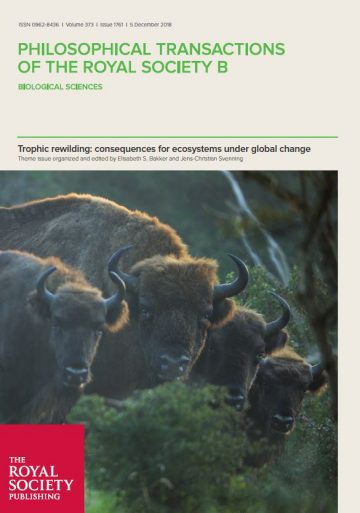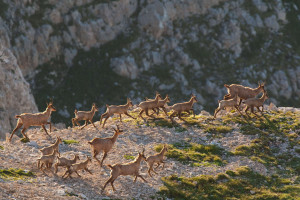Co-authored by several representatives of Rewilding Europe, the article outlines a new approach to monitoring rewilding progress based on levels of anthropogenic intervention and ecological integrity. This widely applicable monitoring technique can help the practical implementation of rewilding and boost conservation and restoration outcomes.

Today rewilding is increasingly being accepted as a fresh, visionary and innovative approach to conservation. With the number of rewilding initiatives growing rapidly, both in Europe and farther afield, a standardised, accurate and practical method of monitoring rewilding progress has been increasingly necessary. Co-authored by rewilding Europe, an online article published today in the peer-reviewed scientific journal Philosophical Transactions B, outlines such a method.
The new method involves a bi-dimensional framework for assessing the recovery of processes and their natural dynamics through (i) decreasing human forcing on ecological processes and (ii) increasing ecological integrity of ecosystems. The rewilding assessment framework incorporates the reduction of material inputs and outputs associated with human management, as well as the restoration of natural stochasticity (natural randomness) and disturbance regimes (the natural pattern of periodic disturbances, such as fire or flood, followed by a period of recovery), landscape connectivity and trophic complexity.
 To rate the impact of human intervention on ecosystems, the authors designed a set of indicators to measure the reduction of material inputs and outputs associated with human management. A scoring system combining quantitative and expert opinion-based indicators was then developed to track changes through time. One of the key advantages of the new framework is its widespread applicability.
To rate the impact of human intervention on ecosystems, the authors designed a set of indicators to measure the reduction of material inputs and outputs associated with human management. A scoring system combining quantitative and expert opinion-based indicators was then developed to track changes through time. One of the key advantages of the new framework is its widespread applicability.
“Rewilding is all about the restoration of complex and self-regulating ecosystems in a wide variety of environments,” says lead author Dr. Aurora Torres, of the German Centre for Integrative Biodiversity Research (iDiv). “Against such a diverse and dynamic backdrop, it has so far been very difficult to evaluate its ongoing impact. This new framework is a game changer.”
As part of its development, the fitness of the new monitoring framework was tested in rewilding projects with vastly different ecologies, geographies and timescales: from the Millingerwaard area on the River Rhine in the Netherlands, to the inland wetlands of Iberá in Argentina – where iconic species such as giant anteater, pampas deer and tapir have recently been reintroduced – to the Swiss National Park in the Western Rhaetian Alps – where populations of chamois and golden eagle have rebounded since the park’s designation as a wilderness area in 1914. Across these projects, the framework successfully underpinned sound decision-making, connected the science and practice of rewilding, and improved conservation and restoration outcomes.
The rewilding score generated by the new framework is not a simple addition of its components, but results from their synergistic combination. The authors of the article are keen to stress that achieving the highest possible score should not be the default objective of a rewilding project.
“Gradual increases in the natural condition of ecosystems at lower and intermediate scores can constitute a sensitive restoration target in many situations where it is critical to balance the socio-economic consequences,” says iDiv’s Torres.

By providing guidance and feedback, the new framework will hopefully incentivise rewilding practitioners, funders and decision-makers to adopt or demand a multifaceted approach to rewilding, and ensure conservation initiatives not only focus on the recovery of species and habitats, but also ecosystem function and processes.
“Although there are challenges remaining, we believe that this new monitoring framework will help catalyse positive and ambitious visions for rewilding in European landscapes. We invite rewilding initiatives across Europe to start using it, with guidelines soon to be made available,” says Frans Schepers, Rewilding Europe’s managing director and also a co-author of the article.
Dating back to 1887, Philosophical Transactions of the Royal Society B: Biological Sciences is a biweekly peer-reviewed scientific journal published by the Royal Society in London. Each issue covers a specific area of the biological sciences. The theme of the issue in which the Rewilding Europe co-authored article appears is “Trophic rewilding – consequences for ecosystems under global change”.
